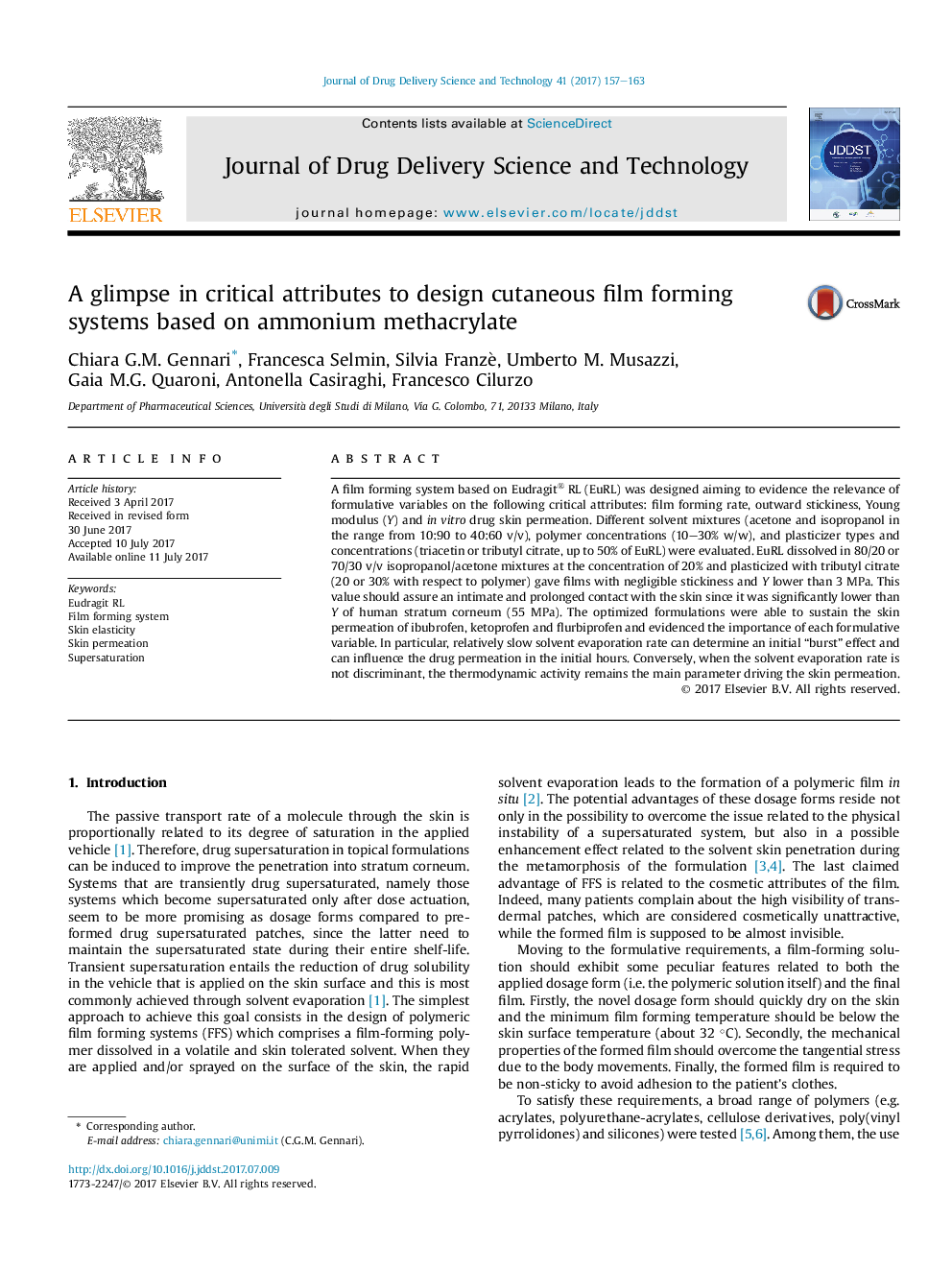| Article ID | Journal | Published Year | Pages | File Type |
|---|---|---|---|---|
| 5548045 | Journal of Drug Delivery Science and Technology | 2017 | 7 Pages |
A film forming system based on Eudragit® RL (EuRL) was designed aiming to evidence the relevance of formulative variables on the following critical attributes: film forming rate, outward stickiness, Young modulus (Y) and in vitro drug skin permeation. Different solvent mixtures (acetone and isopropanol in the range from 10:90 to 40:60 v/v), polymer concentrations (10-30% w/w), and plasticizer types and concentrations (triacetin or tributyl citrate, up to 50% of EuRL) were evaluated. EuRL dissolved in 80/20 or 70/30 v/v isopropanol/acetone mixtures at the concentration of 20% and plasticized with tributyl citrate (20 or 30% with respect to polymer) gave films with negligible stickiness and Y lower than 3 MPa. This value should assure an intimate and prolonged contact with the skin since it was significantly lower than Y of human stratum corneum (55 MPa). The optimized formulations were able to sustain the skin permeation of ibubrofen, ketoprofen and flurbiprofen and evidenced the importance of each formulative variable. In particular, relatively slow solvent evaporation rate can determine an initial “burst” effect and can influence the drug permeation in the initial hours. Conversely, when the solvent evaporation rate is not discriminant, the thermodynamic activity remains the main parameter driving the skin permeation.
Graphical abstractDownload high-res image (178KB)Download full-size image
